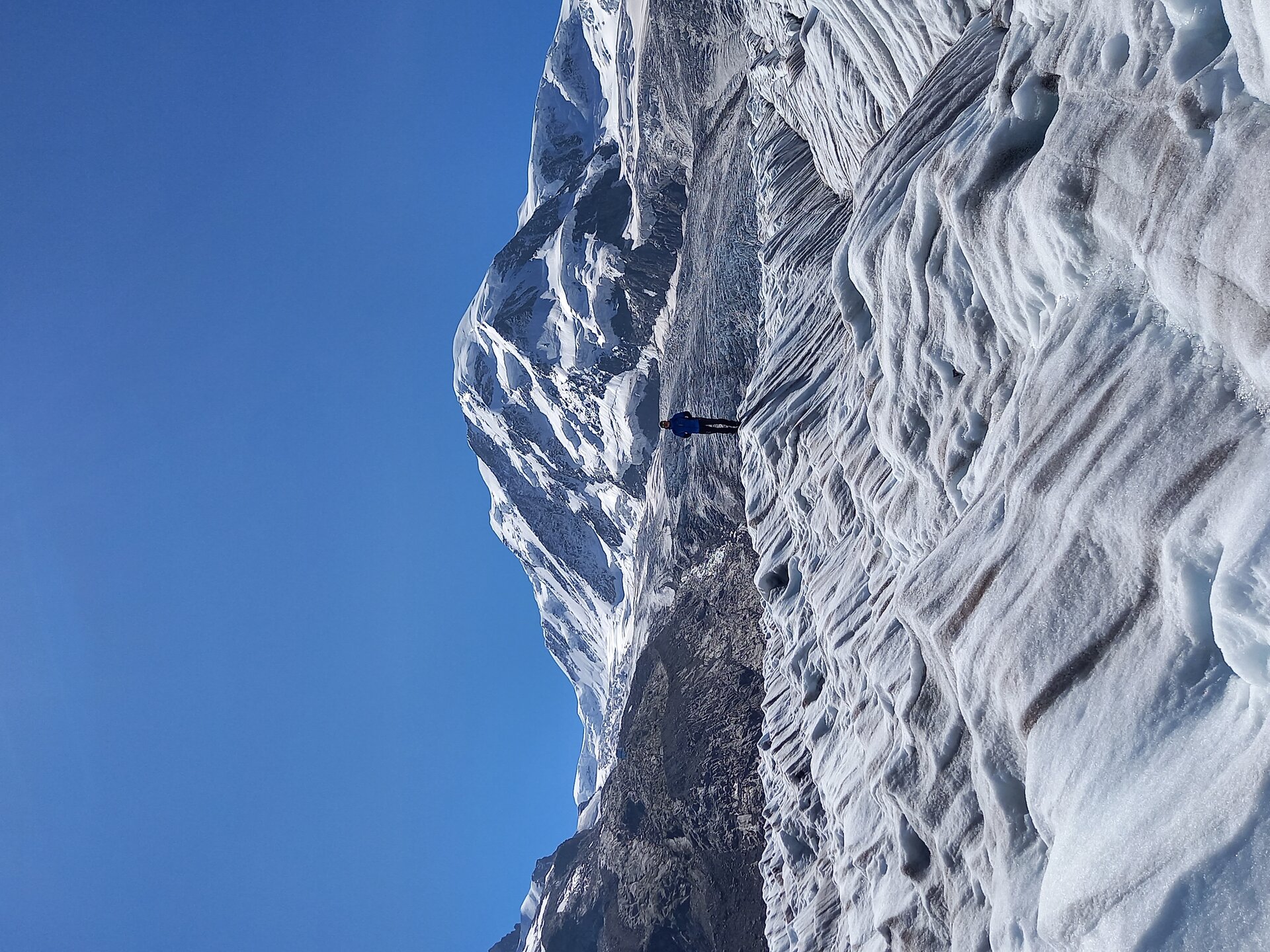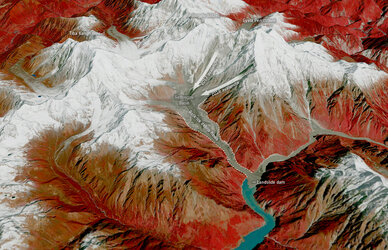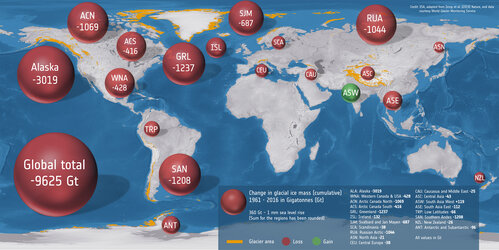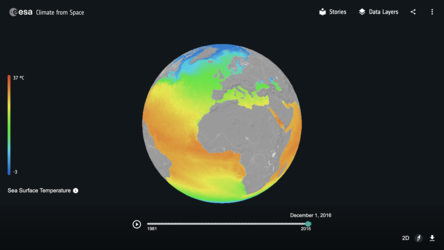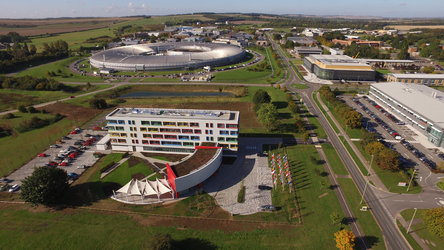ESA-led expedition investigates glacier retreat
Last week ESA led a research trip to the Swiss Alps to explore how climate change is impacting one of the mountain range’s largest ice masses, the Gorner Glacier.
The trip highlighted how ESA’s Climate Office in the UK is using space data to boost global understanding of the world’s shrinking glaciers.
The expedition team included head of the Climate Office Susanne Mecklenburg, ESA astronaut Luca Parmitano, and a group of scientists that collected measurements to examine the consequences of global warming.
They were accompanied by a film crew that captured the trip for an upcoming documentary. This is set to premiere ahead of this year’s United Nations Climate Change Conference, which will take place in Glasgow from 31 October to 12 November.
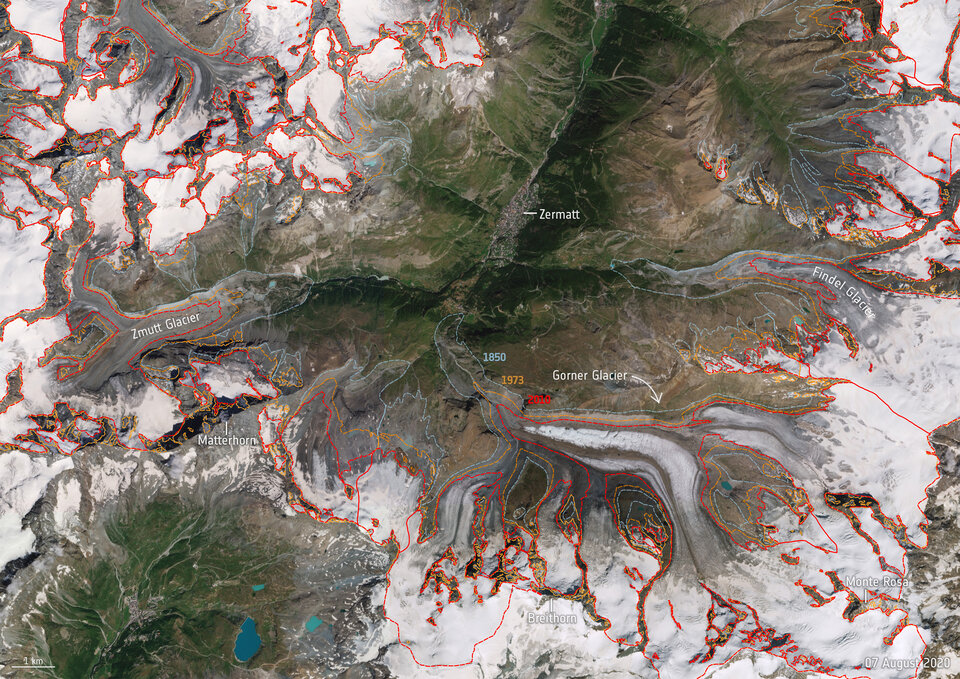
Situated near the Monte Rosa massif close to Zermatt in southern Switzerland, the Gorner Glacier has retreated drastically since the end of the 19th century, and in the past few years ice losses have been accelerating. It is one of the most extensively studied glaciers on Earth.
Mecklenburg said: “Gorner is one of only a few hundred of the world’s 215 000 glaciers that are regularly monitored in the field. Observations from satellites, including missions such as Copernicus Sentinel-2, provide complementary information and contribute substantially to their monitoring.”
Through its Climate Change Initiative – which is coordinated by ESA’s Climate Office – the agency transforms satellite observations into long-term observation datasets that provide scientific evidence for key aspects of the climate. This includes information on the extent of glaciers across the world.
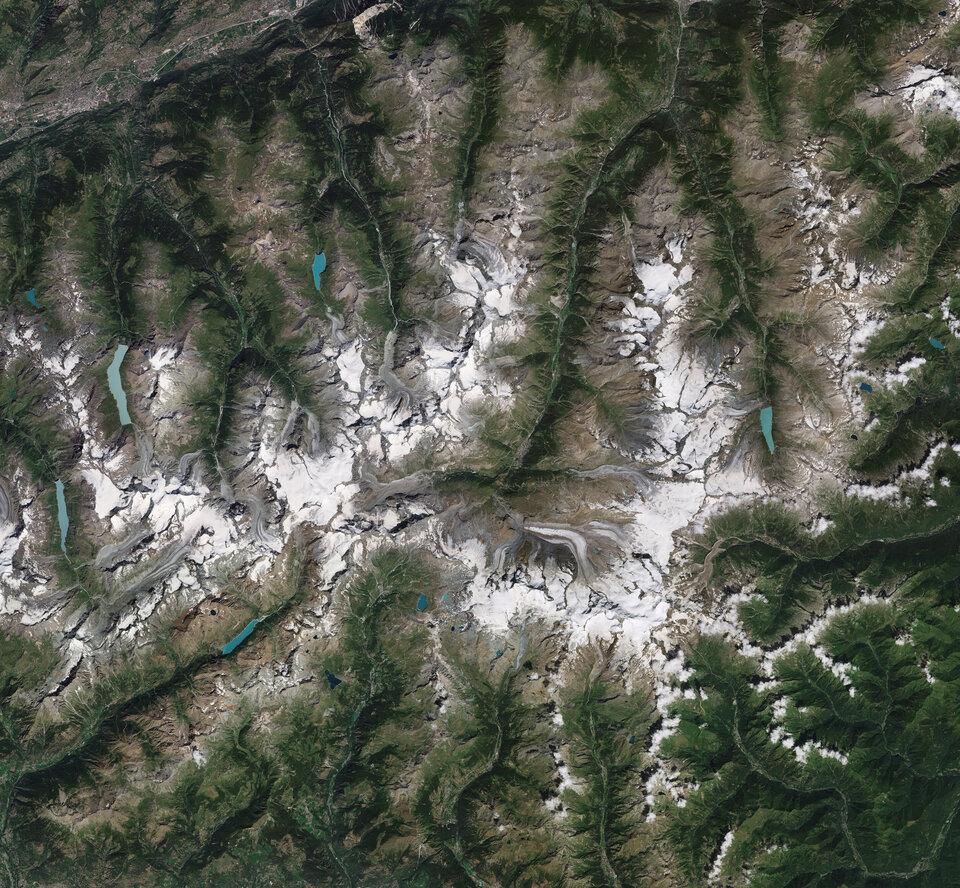
Developed by the Climate Change Initiative’s glacier project team, this satellite-derived data is helping scientists to better understand how glaciers are responding to global warming.
In addition, these observations are key to improving the models used to predict future climate changes.
Recent assessments revealed that a small subset of the world’s glaciers lost over 9 trillion tonnes of ice between 1961 and 2016, while a further global study confirmed this trend applied with greater certainty and spatial coverage.
Activities coordinated by the Climate Office make important contributions to international scientific assessments of the climate.
Earlier this month, the Intergovernmental Panel on Climate Change released the first instalment of its sixth assessment report. It stated that worldwide glacier ice losses since the second half of the 19th century were unprecedented when compared to least the last 2000 years.
ESA’s Climate Office is based at the agency’s European Centre for Space Applications and Telecommunications in the UK.


